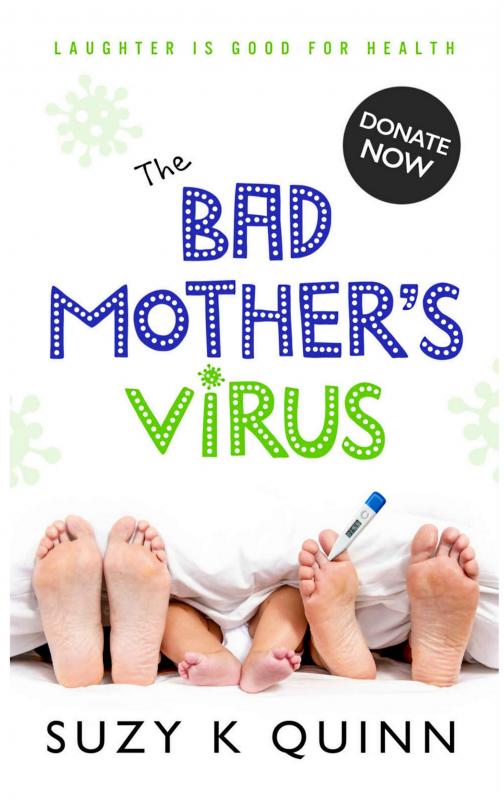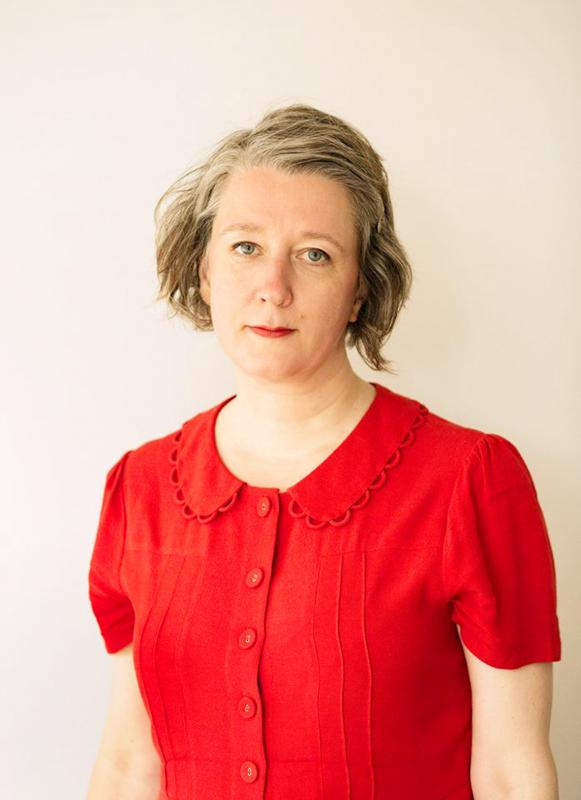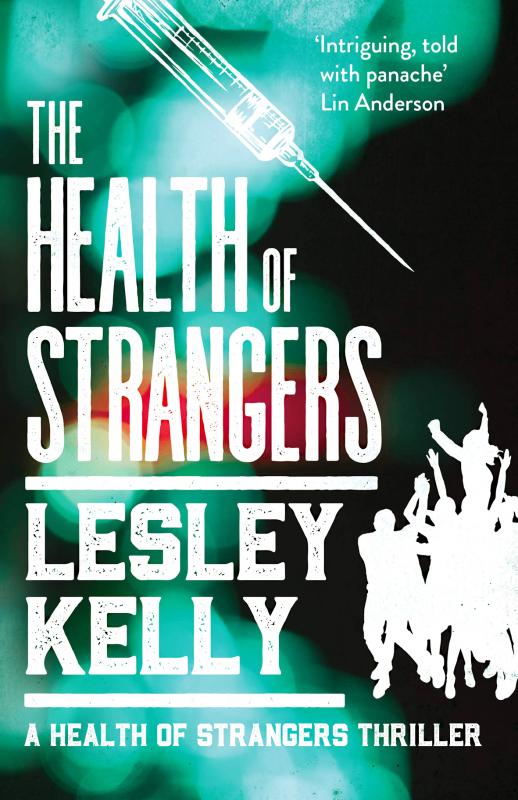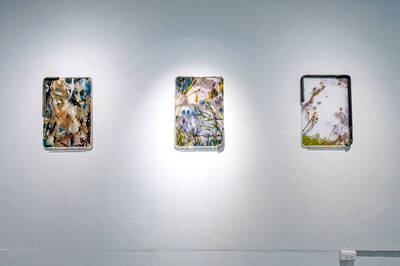Tom Watson, the former deputy leader of the Labour party, has been having a busy lockdown. Signed up to write a political thriller called The House, he and his co-author Imogen Robertson have been rapidly rejigging their novel to reflect a post-COVID-19 world.
Their near-future setting now includes a national inquiry “about what’s going on in the background,” where characters — if they meet socially — “choose not to drink out of glasses and they wipe the bottle before they drink,” and undergo temperature checks when entering public buildings, “which everyone is used to by then,” says Watson, who is finding life away from politics as a newly minted thriller author “a relief.”
Watson and Robertson have had to decide: will there be a vaccine, in their vision of the future?

Photo courtesy of Amazon
“To be honest, we still haven’t quite worked out whether we’re going to have one or not,” he says. “But whatever happens, people are not yet safe in that near future, but they’re kind of over the worst. It’s not a dystopian, post-civilization world — we’re in a slightly weird world, where things have changed, but not completely.”
While there have already been numerous announcements of novels purposefully set during the lockdown — Avon has already snapped up Love in Lockdown, about two neighbors who meet on their balconies, while Hodder & Stoughton has acquired Stay Home, in which a married woman breaks lockdown to find her lover murdered in his living room — many more writers are in Watson and Robertson’s boat, making tweaks and adjustments to reflect our current situation, rather than big changes to plot or character. After all, who among us knows what our future will look like?
‘MASSIVE ELEPHANT’ IN THE ROOM

Photo courtesy of Wikimedia Commons
“I’m finding it incredibly difficult to work out what to do,” says Holly Watt, author of To the Lions, winner of last year’s CWA Ian Fleming Steel Dagger. She is working on her next novel, the third in her series following investigative journalist Casey Benedict, which was due to be published in the summer of next year.
“I’m trying to work out where we might be. Might there be a vaccine? Will getting on a plane feel wildly anachronistic? Will journalists working from an office seem weird? How interesting can a book actually be when everyone is sitting in their sitting room in their pajamas?” Watt asks. “It feels odd to be writing about people hopping on trains or popping to the pub, but focusing on [COVID-19] might make it date hideously. But if you don’t mention it, it is the massive elephant in the room.”
Anatomy of a Scandal author Sarah Vaughan was recently writing a scene where two characters meet in a dingy London pub full of tourists.

Photo courtesy of Wikimedia Commons
“I started putting the tourists in face masks, then describing the character’s discomfort in the insalubrious surroundings; then realized that actually she’d be more likely — for a novel published next year or in 2022 — to have her meeting, perhaps with a takeaway coffee, along the Embankment,” says Vaughan, who scrapped the pub “because who knows if this will make my novel feel anachronistic.”
“But there’s a more substantive point: I can’t make my characters exist without interaction,” she says. “While, for instance, I can edit out cheek kisses because this may no longer seem the norm, my characters need to meet, to row, to fight, to make love — and in a thriller, to murder. There will be insufficiently little exciting plot, in other words, if they can’t interact as they did pre-COVID.”
Many writers have decided to shift their novels to the near past to avoid the pandemic entirely. Romance novelist Romy Sommer was writing a contemporary romance set in a Tuscan vineyard, but has agreed with her editor to put it on hold until Italy’s situation stabilizes.

Photo courtesy of Amazon
“Maybe I’ll set it in the past, maybe I’ll incorporate [COVID-19] once it’s blown over. Certainly can’t set it now,” she says.
And Harriet Evans has moved her next novel, the follow-up to The Garden of Lost and Found, back to 2018, “to give clear blue water between the action and our reality.” The coronavirus is not entirely absent, however.
“There’s one bit where a character is talking about various projects opening in 2020 and she says, ‘I’ll be traveling all over the world come 2020: Singapore, Abu Dhabi, New York,’” says Evans. “Since she’s rather grand, I hope the reader will like that as a nod between us all that no, she won’t.”
Jenny O’Brien, a nurse whose debut thriller, Silent Cry, has just been published by HarperCollins, is now planning to leave a gap in her detective series from January until a still-undecided future date.
“I think conducting a crime investigation under lockdown rules would be a mammoth task, throwing up all kinds of unimaginable difficulties, which I doubt would be particularly interesting to read,” she says. “As a writer, I like to make a good attempt at ensuring that my books are well researched. I think I’d fail unless I sought advice from officers working through it — that would be inappropriate in the current climate.”
WHEN REALITY ECHOES FICTION
Others authors who were writing novels about illness are now facing a unique dilemma. Like Lesley Kelly, whose Health of Strangers series, which she started writing around five years ago, is set during a pandemic similar to COVID-19. Watching reality echo her fiction has forced her to reassess where her writing will go.
When TV presenter Samira Ahmed recently tweeted: “To anyone thinking of writing a novel about their midlife crisis, set against the backdrop of the coronavirus, please don’t,” Kelly replied: “But what if you’ve already written a novel about a pandemic, set against the background of your midlife crisis?”
“When I started writing I was able to make up everything to do with the governmental and societal response to the virus,” she added. “Now all my potential readers are armchair experts on pandemic responses. Do I nudge my world into reacting like real life, or do I continue with my own way of doing things? I can’t really complain, because never has an author been handed so much inspiration on a plate. I could fill 30 books with new angles on the virus that I hadn’t thought of.”
Claire Fuller, winner of the Desmond Elliott prize, is 15,000 words into her fifth novel, which was, up until recently, set in the near future and dealing with an illness.
“It’s taken a lot of thought about how to deal with the pandemic in the world of the novel — I don’t think it’s possible not to reference it, and also I’m sure we will all, including governments, behave differently towards future threats,” says Fuller, who has found her own solution: the book is now set this year “with a slightly different reality, without COVID but with an alternative illness”.
But some authors are making a virtue out of necessity. Suzy K Quinn was writing The Bad Mother’s Wedding, the latest in her Bad Mother’s Diary series, when the pandemic struck. The novel became The Bad Mother’s Virus, following single mother Juliette Duffy as her world is sent into chaos by the coronavirus crisis. It was rushed out on Sunday, with all profits going towards research for a vaccine and healthcare funds.
“I’ve been up at 4am most days and working seven days a week, whilst trying, and often failing, to home school the kids. It’s been great having a project during all this, because I have felt quite sad and worried sometimes,” says Quinn. “Being able to do something positive and write a charitable book has felt amazing.”
And Fiona Woodifield, the author of the balcony-romance Love in Lockdown under the pseudonym Chloe James, faces a unique challenge: conveying the severity of the crisis in an ultimately positive tale about how love can always find a way — even in a pandemic.
“At first it was easy to hope that perhaps we could just ignore the pandemic and bury ourselves in romantic fiction, far away from the reality of this awful situation,” she says. “However it seems this lockdown and social distancing is going to be here to stay for some time. People need to be able to read relatable fiction about a very confusing and potentially isolating time. I hope it might make some feel less alone, and give people a sense of hope in a way that love, community and kindness triumphs over all.”

In late October of 1873 the government of Japan decided against sending a military expedition to Korea to force that nation to open trade relations. Across the government supporters of the expedition resigned immediately. The spectacle of revolt by disaffected samurai began to loom over Japanese politics. In January of 1874 disaffected samurai attacked a senior minister in Tokyo. A month later, a group of pro-Korea expedition and anti-foreign elements from Saga prefecture in Kyushu revolted, driven in part by high food prices stemming from poor harvests. Their leader, according to Edward Drea’s classic Japan’s Imperial Army, was a samurai

Located down a sideroad in old Wanhua District (萬華區), Waley Art (水谷藝術) has an established reputation for curating some of the more provocative indie art exhibitions in Taipei. And this month is no exception. Beyond the innocuous facade of a shophouse, the full three stories of the gallery space (including the basement) have been taken over by photographs, installation videos and abstract images courtesy of two creatives who hail from the opposite ends of the earth, Taiwan’s Hsu Yi-ting (許懿婷) and Germany’s Benjamin Janzen. “In 2019, I had an art residency in Europe,” Hsu says. “I met Benjamin in the lobby

April 22 to April 28 The true identity of the mastermind behind the Demon Gang (魔鬼黨) was undoubtedly on the minds of countless schoolchildren in late 1958. In the days leading up to the big reveal, more than 10,000 guesses were sent to Ta Hwa Publishing Co (大華文化社) for a chance to win prizes. The smash success of the comic series Great Battle Against the Demon Gang (大戰魔鬼黨) came as a surprise to author Yeh Hung-chia (葉宏甲), who had long given up on his dream after being jailed for 10 months in 1947 over political cartoons. Protagonist

Peter Brighton was amazed when he found the giant jackfruit. He had been watching it grow on his farm in far north Queensland, and when it came time to pick it from the tree, it was so heavy it needed two people to do the job. “I was surprised when we cut it off and felt how heavy it was,” he says. “I grabbed it and my wife cut it — couldn’t do it by myself, it took two of us.” Weighing in at 45 kilograms, it is the heaviest jackfruit that Brighton has ever grown on his tropical fruit farm, located